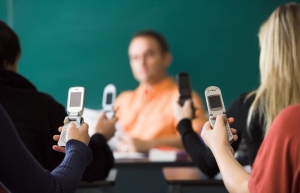Building Resilience in Children is a new 3-hour online continuing education (CE) course that offers a variety of resilience interventions to help children flourish.
Health professionals are treating an increasing number of children who have difficulty coping with 21st century everyday life. Issues that are hard to deal with include excessive pressure to succeed in school, bullying, divorce, or even abuse at home.
This course provides a working definition of resilience and descriptions of the characteristics that may be associated with better outcomes for children who confront adversity in their lives. It also identifies particular groups of children – most notably those with developmental challenges and learning disabilities – who are most likely to benefit from building resilience training. The bulk of the course – presented in two sections – offers a wide variety of building resilience interventions that can be used in therapy, school, and home settings. Course #31-26 | 2020 | 62 pages | 20 posttest questions
- CE Credit: 3 Hours
- Target Audience: Psychologists | Counselors | Social Workers | Occupational Therapists | Marriage & Family Therapists | School Psychologists | Teachers
- Learning Level: Introductory
- Course Type: Online
Building Resilience in Children provides instant access to the course materials (PDF download) and CE test. The course is text-based (reading) and the CE test is open-book (you can print the test to mark your answers on it while reading the course document).
Successful completion of this course involves passing an online test (80% required, 3 chances to take) and we ask that you also complete a brief course evaluation.
Professional Development Resources is approved by the American Psychological Association (APA) to sponsor continuing education for psychologists. Professional Development Resources maintains responsibility for this program and its content. Professional Development Resources is also approved by the National Board of Certified Counselors (NBCC ACEP #5590); the Association of Social Work Boards (ASWB Provider #1046, ACE Program); the American Occupational Therapy Association (AOTA Provider #3159); the Commission on Dietetic Registration (CDR Provider #PR001); the Alabama State Board of Occupational Therapy; the Florida Boards of Social Work, Mental Health Counseling and Marriage and Family Therapy (#BAP346), Psychology & School Psychology (#50-1635), Dietetics & Nutrition (#50-1635), and Occupational Therapy Practice (#34); the Georgia State Board of Occupational Therapy; the New York State Education Department’s State Board for Mental Health Practitioners as an approved provider of continuing education for licensed mental health counselors (#MHC-0135); the Ohio Counselor, Social Worker & MFT Board (#RCST100501); the South Carolina Board of Professional Counselors & MFTs (#193); the Texas Board of Examiners of Marriage & Family Therapists (#114) and State Board of Social Worker Examiners (#5678); and is CE Broker compliant (all courses are reported within a few days of completion).
Enjoy 20% off all online continuing education (CE/CEU) courses @pdresources.org! Click here for details.




